Over the last decade, we’ve been establishing innovation processes for organizations. During this time, we found that there are typically six things needed to successfully implement an innovation program:
Develop a clear innovation strategy: To ensure innovation managers collect ideas that move them closer to their business goals, they must first define what the organization is trying to achieve with its innovation efforts.
Centralize innovation processes by investing in innovation management software: Innovation departments sometimes use various spreadsheets, survey tools, and SOPs to manage the innovation process. This can get messy and stifle collaboration and visibility, which is why we recommend investing in innovation management software.
Prompt employees to submit ideas relevant to the innovation strategy: We found that context-less, open calls for ideas typically don’t result in submissions related to the innovation strategy. We recommend educating employees about the innovation strategy and prompting them to submit relevant ideas.
Crowdsource idea feedback: Ideas are rarely “fully baked” upon submission. They have weaknesses that innovation managers need to work through before implementation. So, we recommend crowdsourcing feedback by allowing everyone within the organization to view submitted ideas, leave comments, and start discussions.
Have the evaluation workflows in place to validate and launch ideas: Innovation managers need evaluation workflows to turn ideas into products and processes. Otherwise, ideas remain untouched.
Support long-term employee involvement: Innovation managers should encourage ongoing participation by rewarding employees for their idea submissions and showing them the impact of their ideas.
Below, we discuss how you can successfully implement innovation in your organization and dive deeper into each tip. At the end, we show how our client, Novo Nordisk, used InnovationCast to establish a company culture of innovation.
Step 1: Develop an Innovation Strategy
Many organizations have an innovation program with dedicated innovation departments and managers. However, of the organizations we talk to, only some seem to feel their innovation program consistently produces ideas and solutions that move them closer to key goals and priorities.
In our experience, this problem often stems from not having a defined innovation strategy.
An innovation strategy details what your organization is trying to achieve with its innovation efforts. This may include:
Reducing customer churn by releasing new product features
Attracting high-quality talent by improving the hiring process and work environment
Responding to a new technology or feature that a competitor released
Improving operational efficiency by introducing new processes
Note that an innovation strategy isn’t an innovation process. An innovation strategy refers to the goals you’re trying to achieve, while an innovation process defines how you plan to achieve these goals (ideation, assessment, validation, and implementation).
Once you're clear on the priorities of your innovation efforts, you can begin informing employees about these priorities (by holding quarterly meetings or sending periodic newsletters, for example).
Step 2: Centralize Innovation Processes by Investing in Innovation Management Software
From what we’ve seen, innovation departments typically use a combination of survey tools, project management tools, and spreadsheets to collect and implement ideas.
This can become unorganized and stifle innovation because teams are working with different tools at different parts of the innovation process; those submitting ideas submit them through surveys or an email form, those reviewing ideas work in separate tools, and those implementing ideas are in another batch of tools.
People submitting ideas can’t see what happens to them, there’s no cohesive workflow, and things get lost along the way. (Most innovation departments that start with these tools eventually outgrow them due to the disorganization and lack of collaboration between teams.)
That’s why we recommend innovation managers centralize innovation efforts within a collaborative platform.
Everyone can log in to the same hub, learn about the organization's innovation strategy, submit relevant ideas, collaborate to improve them, and track ideas through launch. These software solutions have tools to manage idea collection, assessment, validation, and implementation, preventing documents from being lost or siloed inside multiple applications.
We created InnovationCast — our innovation management platform — to solve this exact issue.
InnovationCast provides all of the necessary features to manage innovation ideas and projects.
With InnovationCast, you can:
Bring employees (and perhaps outside subject matter experts) together to collaborate on innovation initiatives under one roof.
Give employees complete transparency into what happened to their ideas after submission.
Design various idea evaluation workflows to validate different types of innovations and push them into implementation.
Automate repetitive tasks such as training employees on how the software works, nudging employees to participate in innovation efforts, and tracking the progress of ideas.
Keep a historical record of all previous ideas and implementations and learn from these outcomes.
Read more: Innovation Management at most companies is broken. Here is how we are fixing it.
Step 3: Prompt Employees to Submit Ideas Relevant to the Innovation Strategy
In our experience, the method innovation managers use to collect ideas is a determining factor in the success of an innovation program.
A common mistake we see innovation managers make is asking employees to submit (any) ideas to a company email address or web form.
This method doesn’t provide employees with information on the organization's current business strategy or innovation goals, making it very unlikely that employees will submit ideas on topics aligned with those priorities.
Instead, we suggest innovation managers create “innovation challenges” that provide employees with thorough background information on company priorities and then ask employees to submit relevant ideas related to those specific challenges or priorities.
In our experience, this dramatically increases the amount of ideas aligned with current company goals. Providing thorough background information also improves the specificity and quality of submitted ideas.
With this in mind, we added two idea collection features to InnovationCast: Challenges and "Always On."
How InnovationCast Supports the Creation of Challenges
Innovation challenges are collaborative and time-constrained invitations for employees (and outside user groups) to submit ideas and participate in problem-solving. This collaborative nature fosters a sense of camaraderie among the participants, making the innovation process more engaging and effective.
Innovation managers can post challenges around the priorities identified in step one and use resources like articles, attachments, and FAQ sections to give employees more information about the goals of their innovation strategy.
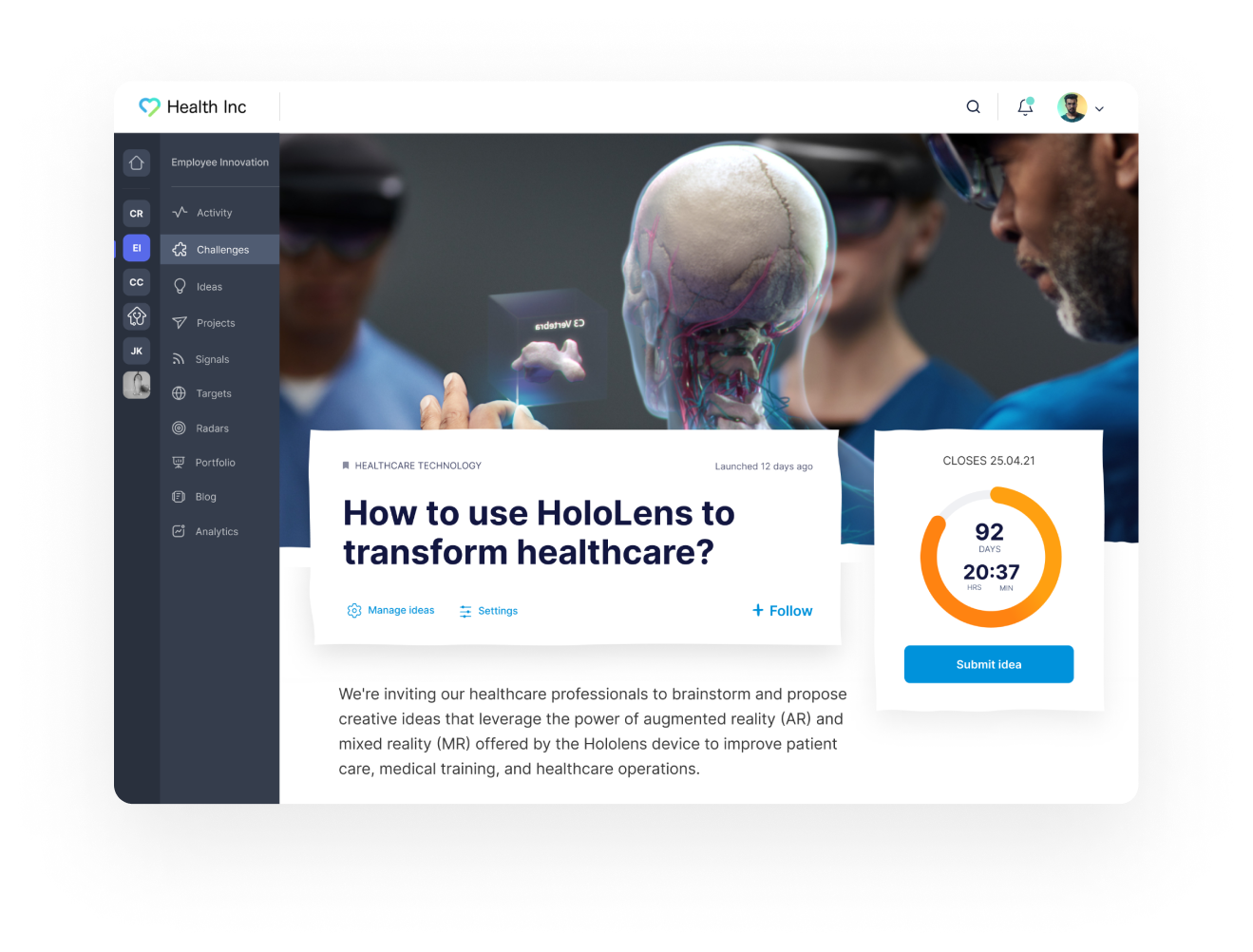
Innovation managers can also set deadlines for these challenges, creating a sense of urgency to submit ideas.
Finally, innovation managers can use our email reminders to notify employees about new challenges and prompt them to reply with their best ideas.
How InnovationCast Supports Open Idea Collection
In addition to posting challenges related to business goals, we recommend opening up idea collection so employees can share ideas even when there aren’t active challenges.
However, we don't recommend allowing employees to submit just any idea. (Although ideas might not be specific answers to active challenges, they should still be relevant to the broader innovation strategy.)
This is why we added a feature called “Always On” to InnovationCast. This differs from open calls for any and all ideas because we encourage innovation managers to establish accepted categories for ideas — and only allow employees to submit ideas related to these categories.
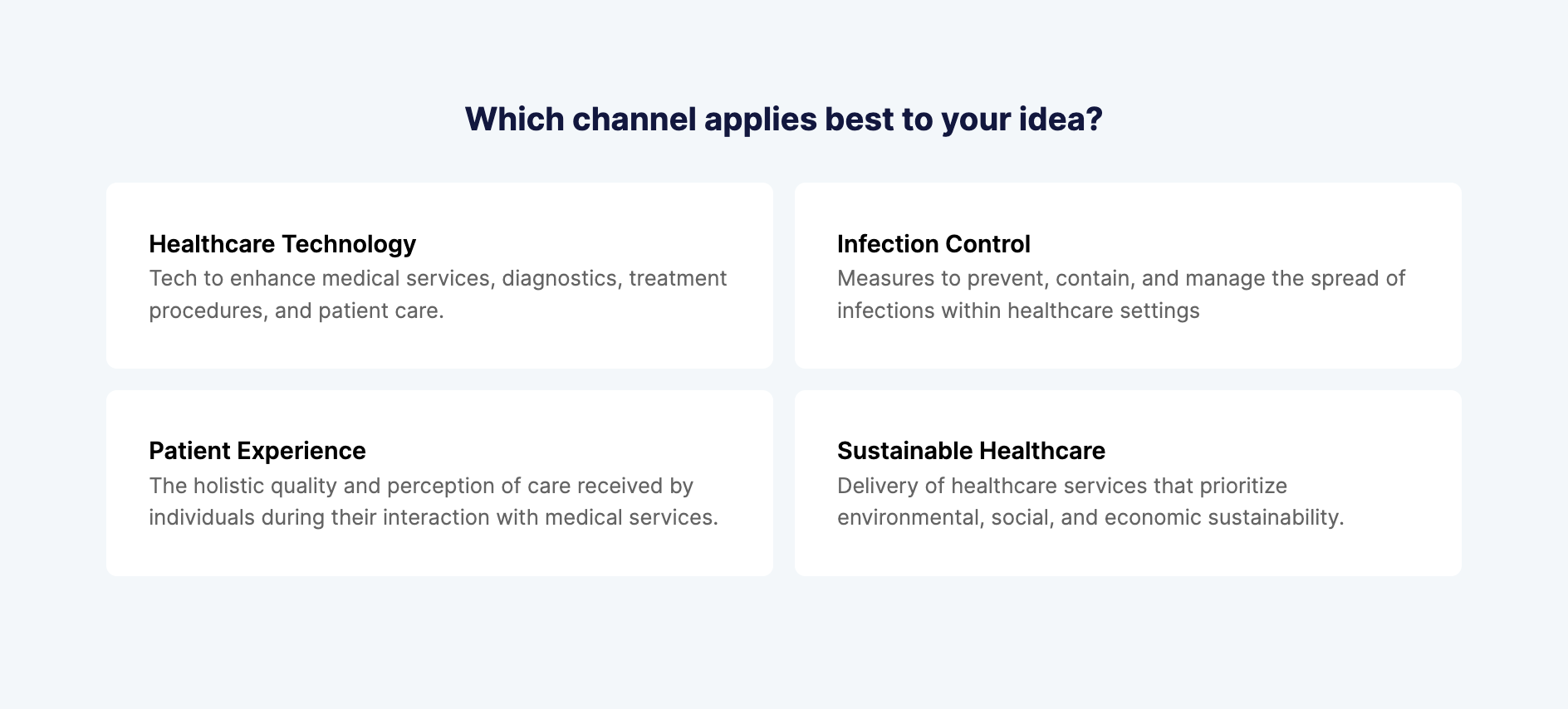
From here, innovation managers can create custom submission forms that ask employees to dive deeper into the specifics of their ideas; these guide innovative thinking and result in more thorough idea submissions.
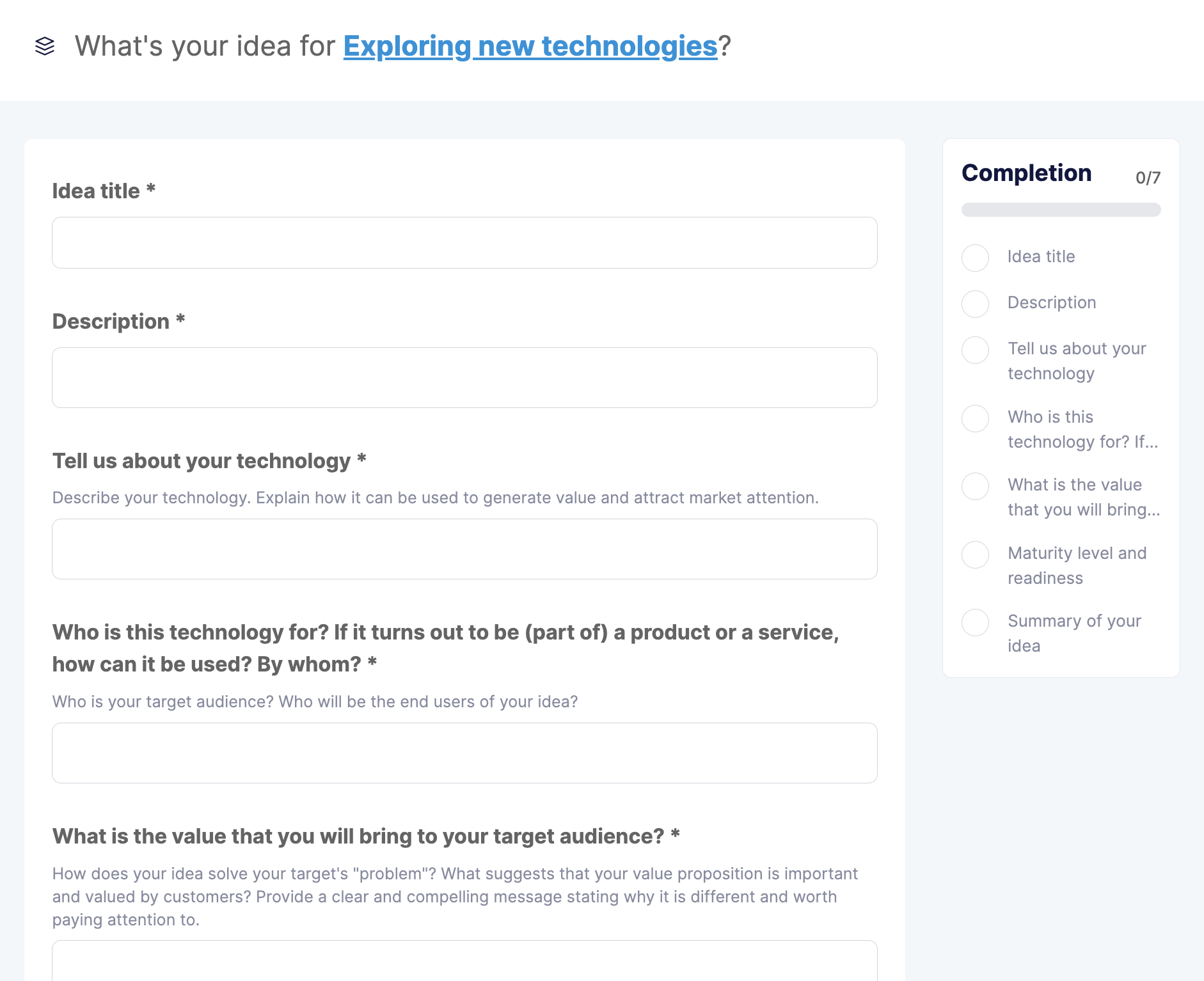
Read more: 7 Strategies to Get Innovative Ideas from Employees
Step 4: Crowdsource Idea Feedback
When you’re working with emails, survey forms, and spreadsheets, access is typically limited to a couple of innovation managers, meaning only a few people can review and leave feedback on submissions.
This hurts the development of ideas because innovation managers don't have the time or subject matter expertise to properly assess ideas across all topics.
This also discourages employees from submitting ideas because they can’t see what happens to them after they submit them. They don’t know if their ideas are considered for implementation or rejected from the start.
Instead, innovation managers should crowdsource idea assessment by allowing everyone in the organization to see and provide feedback on submitted ideas.
This way, innovation managers can draw insights from a wide variety of employees and effectively use the creative thinking of the entire organization to assess ideas.
This visibility also incentivizes employees to continue submitting ideas because they can actually see what happens to them after submission.
How InnovationCast Crowdsources Idea Assessment
Managers can display submitted ideas publicly so that everyone else can see them and provide feedback. Then, InnovationCast has collaborative feedback tools that encourage constructive conversations.

Other users can vote on submitted ideas by saying whether they think they "Look great," "Need work," or are "Undecided." We then require users to provide a reason for their vote, giving original authors specific feedback to improve their ideas.
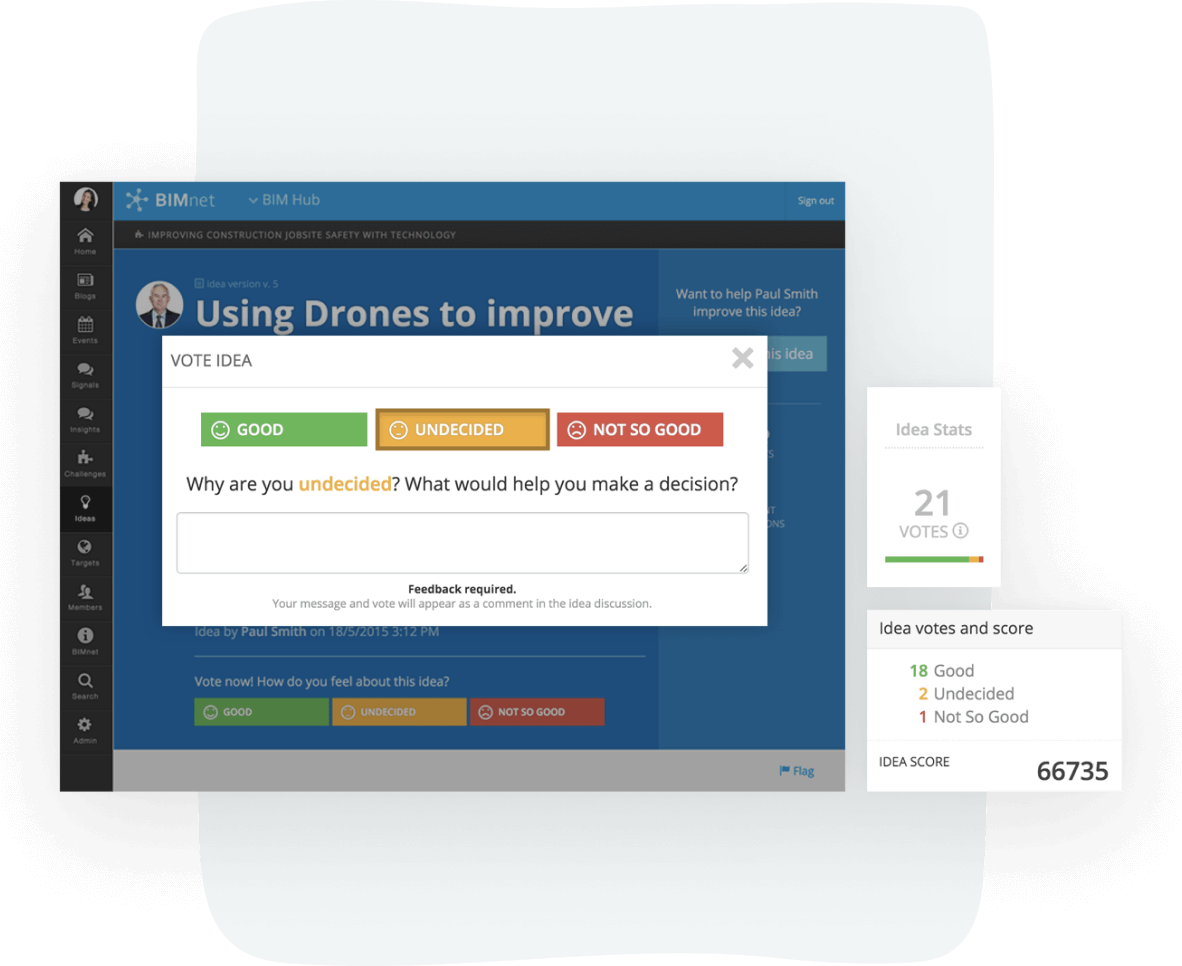
This effectively crowdsources idea assessment because all users can view submitted ideas, help original authors refine them, and inform innovation managers which ideas are worth pursuing.
In addition to these voting and discussion features, employees can follow various challenges and ideas to get notified of any changes. This way, employees can engage with challenges and ideas even if they don't have original ideas to share, fostering a more sustainable innovation program that draws insight from all employees.
Step 5: Have the Evaluation Workflows in Place to Validate and Launch Ideas
From our experience in building innovation strategies and processes for organizations, we’ve found that many stakeholders don’t understand the importance of the full innovation lifecycle.
That is, taking ideas from collection to validation and implementation. They believe that asking employees to submit ideas counts as an innovation program.
While this is a good starting point, idea collection is only one aspect of establishing an innovation program. Organizations need idea evaluation workflows to test and implement ideas; otherwise, ideas lie dormant.
How InnovationCast’s Configurable Idea Evaluation Workflows Validate Ideas
Understanding this, we designed InnovationCast with the workflows and project management tools to facilitate the validation and implementation of ideas.
These idea evaluation workflows are like starting points that cover what the innovation team and subsequent departments must do during each stage of the idea’s lifecycle to launch it successfully.
This includes who needs to manage the workflow, what criteria must be used to assess submitted ideas, and what experiments must be run to validate ideas.
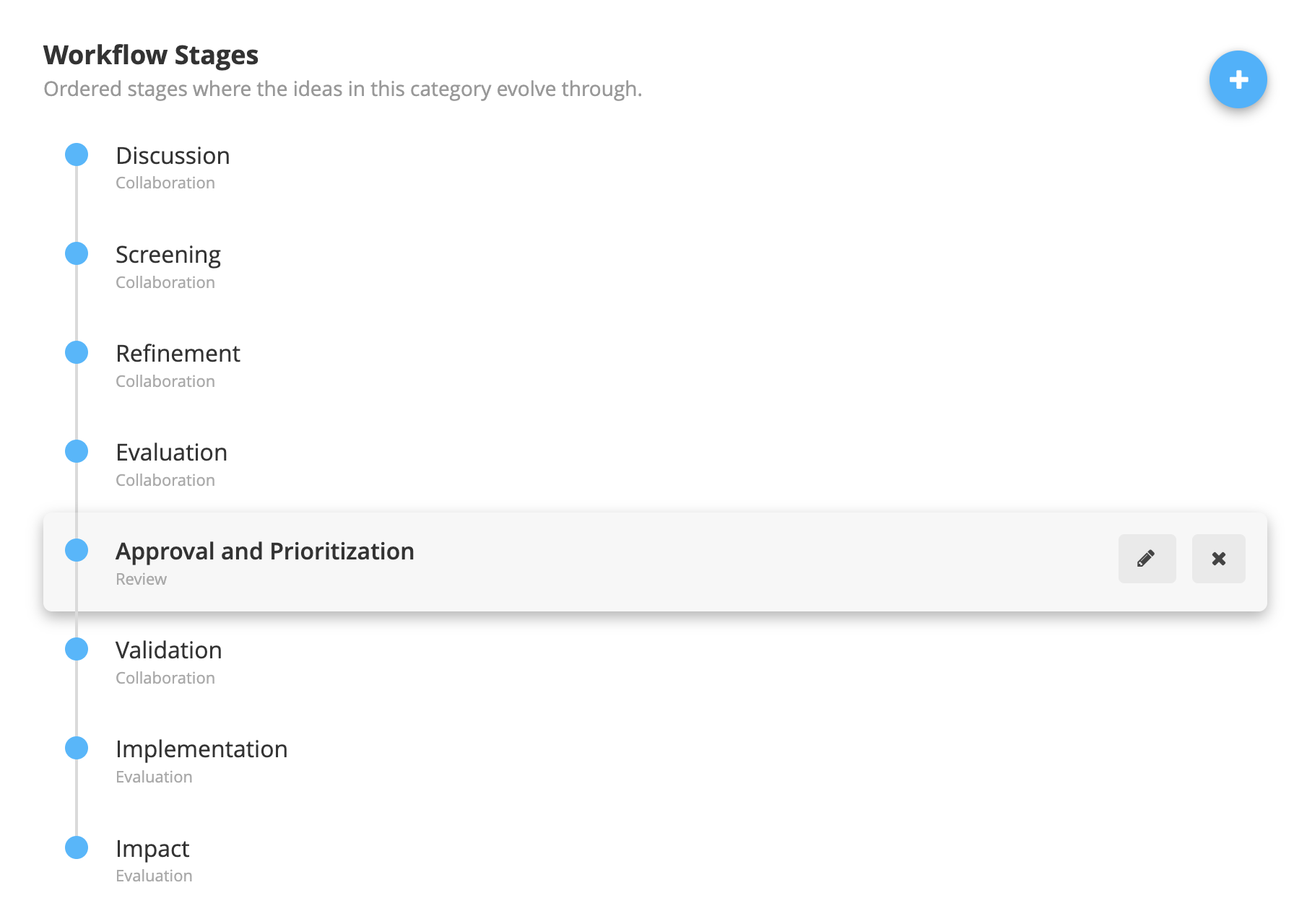
For example, let’s say a hospital is trying to improve communication among staff members by introducing a bespoke internal communication tool:
Innovation managers can set up a workflow that requires the finance team to run a financial risk analysis and determine whether building a bespoke internal communication tool is more cost-effective than signing up for an off-the-shelf solution.
If so, the workflow can call the product development team to build a prototype and send it to a few employees to test whether it improves internal communication.
The HR team can interview employees, get their thoughts on the new tool, and relay any feedback to the product development team.
This configurability allows organizations to manage the entire lifecycle of an idea within InnovationCast. Everyone knows what tasks they are responsible for and when to have them ready, which ensures ideas are turned into actual products and processes.
How InnovationCast’s Project Manager Pushes Ideas Into Implementation
Once innovation departments have validated ideas and voted on which ones to launch, they can use our project manager to create and assign implementation tasks to various teams inside the organization.

Sticking with the example above, if the prototype lives up to expectations, innovation managers can give the green light to the software development team to build the final product and send it to employees.
Additionally, innovation managers can track the progress of current implementations and view a record of all previous implementations. This supports innovation managers’ decision-making, allowing them to learn from past initiatives and tweak their current implementation processes.
Read more: How to Manage Your Company’s Innovation Process
Step 6: Support Long-Term Employee Engagement
Beyond the collection and implementation of ideas, it’s important to support the continuous involvement of employees in innovation initiatives. Without the participation of employees, there is no innovation program. This is why we recommend innovation managers:
Reward employees for quality idea submissions and thoughtful feedback
Encourage employees to participate in innovation efforts beyond idea submission
Nudge employees to stay active
Reward Employees for Quality Idea Submissions & Thoughtful Feedback
Although giving employees insight into the development of their ideas can incentivize them to continue participating in innovation activities, it’s a best practice to reward them for their hard work. Employees who are not rewarded for contributing to innovation initiatives sometimes stop contributing entirely.
So, we give innovation managers a badges and rewards system so they can incentivize employees to submit high-quality ideas and provide thoughtful feedback.
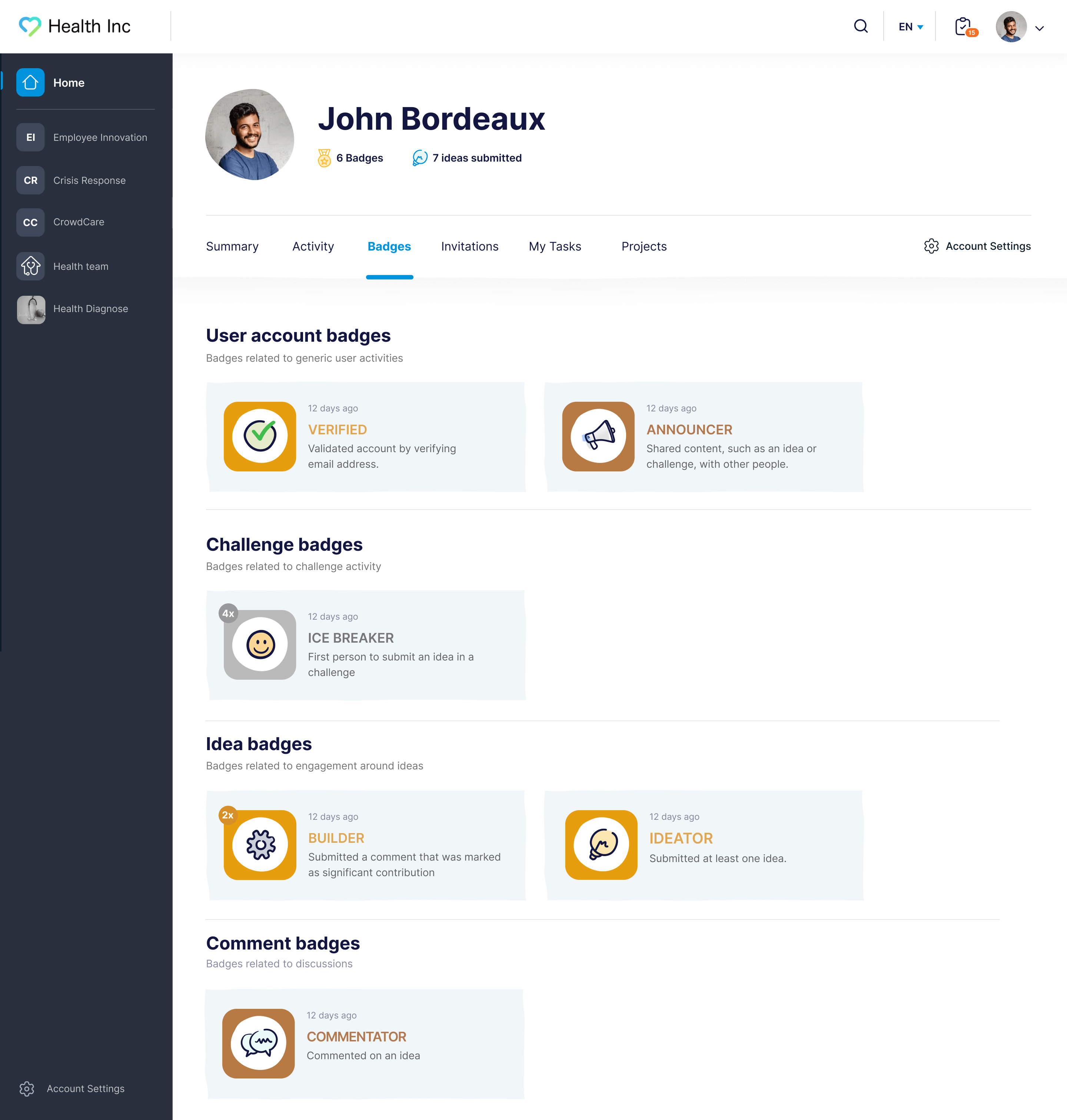
Innovation managers can also dish out points for thoughtful participation, which employees can redeem for cash prizes, PTO, or other rewards.
Innovation managers can also reward employees by publicly recognizing their accomplishments; this helps employees feel noticed and encourages others to participate in innovation efforts.
For example, if an employee submits an idea that solves a key company pain point, innovation managers can feature their win in the monthly newsletter or acknowledge their contribution during a company meeting.
Encourage Employees to Participate in Innovation Efforts Beyond Idea Submission
To truly implement innovation across your organization, you need ways to involve all employees in innovation efforts — not just those with original ideas.
We recommend encouraging employees to share industry news with team members, managers, and stakeholders. This can fuel idea generation as everyone can learn from these resources and keep up with current industry happenings.
For instance, let's say one of the organization's priorities is strengthening cyber security, and an employee learns that a startup launched a new AI to help prevent cyber security threats. The employee can share this news with stakeholders, managers, and colleagues, and everyone can discuss whether it's worth implementing this AI into the company's work processes.
In many organizations, however, this type of news sharing is siloed inside various messaging apps and email threads, so we designed InnovationCast with an open communication feature called Signals & Scouting.
Our Signals & Scouting feature allows users to share articles about competitors, emerging technologies, market trends, innovative products, and other industry news with the rest of the organization inside a centralized location.
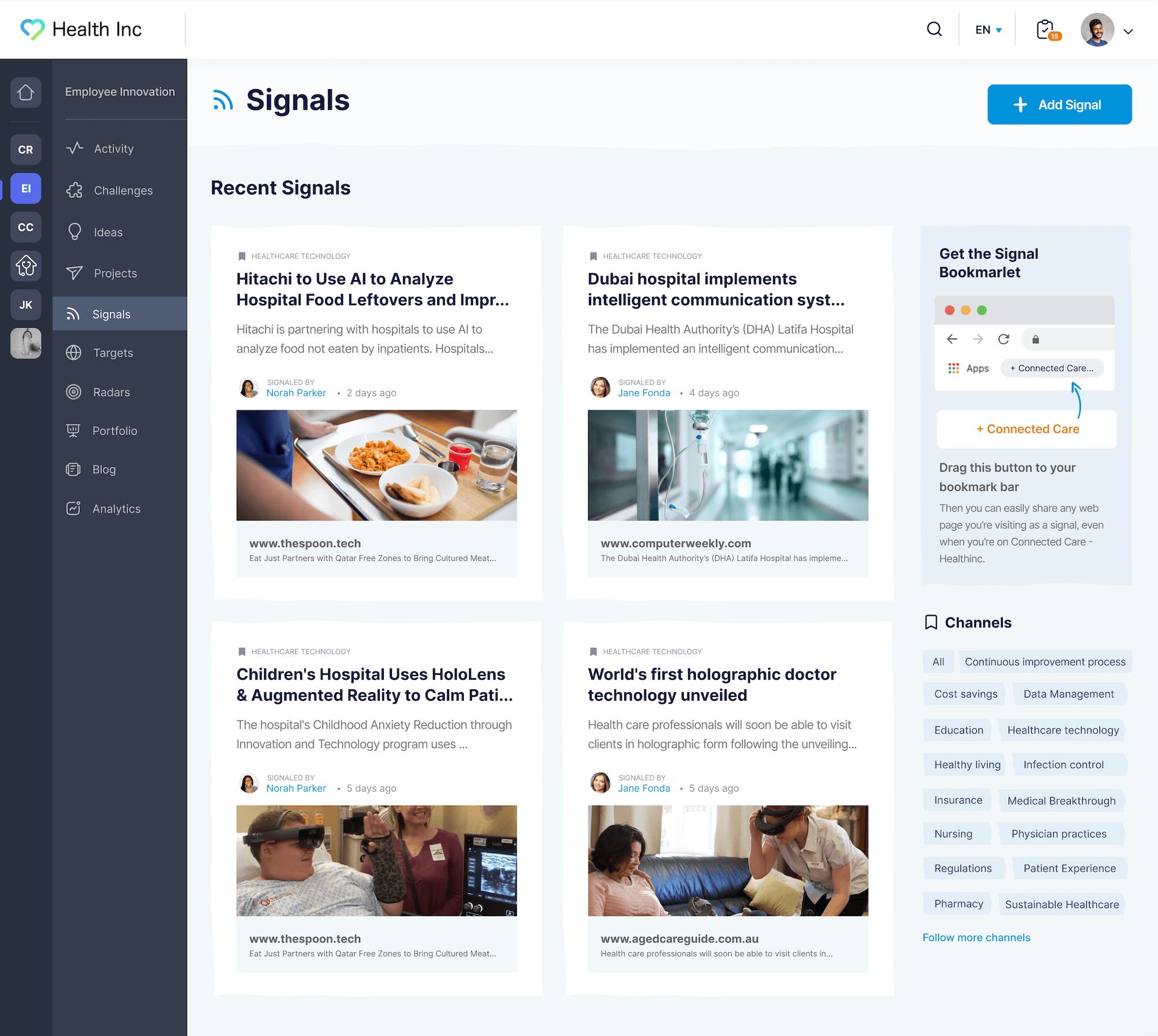
When other users log in to InnovationCast, they can see these resources on their dashboard, leave comments, and start discussions with the original poster.
To ensure all Signals relate to the innovation strategy, we require employees to bucket their Signals into accepted categories established by innovation managers.
Nudge Employees to Stay Active
A successful innovation program depends on the continuous, long-term participation of everyone within the organization.
So, we provide InnovationCast clients with automated email drip campaigns that contain training materials showing employees how the software works.
In addition, innovation managers can create custom emails and send them to employees, nudging them to reply to challenges or share their thoughts on their colleagues’ ideas.

These features support innovation managers by automating onboarding, showing users how to participate in innovation initiatives, and reminding them to stay active.
Read more: How to Encourage Innovation in the Workplace
How InnovationCast Helped Novo Nordisk Establish an Employee Innovation Program
Novo Nordisk is a pharmaceutical company specializing in treating patients with diabetes and other chronic conditions.
In fact, they produce 50% of the world’s insulin supply and have manufactured 60 million insulin pens to date.
Novo Nordisk employs around 50,000 people in over 170 countries to manufacture insulin pens and other medical products.
The company’s innovation department (Novo Nordisk Business Innovation Garage) was tasked with using the brainpower of these 50,000 employees to discover, create, and adopt new technologies.
They aimed to get everyone within the organization to contribute to innovation efforts by submitting ideas and developing them into implementable innovations. So, they partnered with InnovationCast to create an innovation management platform called Spark.
Spark is an easy-to-use innovation platform that allows employees to log in, reply to Challenges, submit ideas, leave feedback on their colleagues’ ideas, and track innovation projects through their entire lifecycle.
Upon launch, thousands of managers, stakeholders, and frontline employees joined Spark; teams across multiple countries were able to share creative ideas and work together to improve them. This ultimately led to the creation, validation, and implementation of hundreds of successful innovations.
Book a Free InnovationCast Demo
InnovationCast can help you develop an organization-wide innovation program and encourage employees to share ideas tied to innovation needs — and it has all the tools to collect, refine, validate, and implement innovative ideas under one roof.
Book a free demo with our team to learn more about our platform and these best practices.
Related reads:

